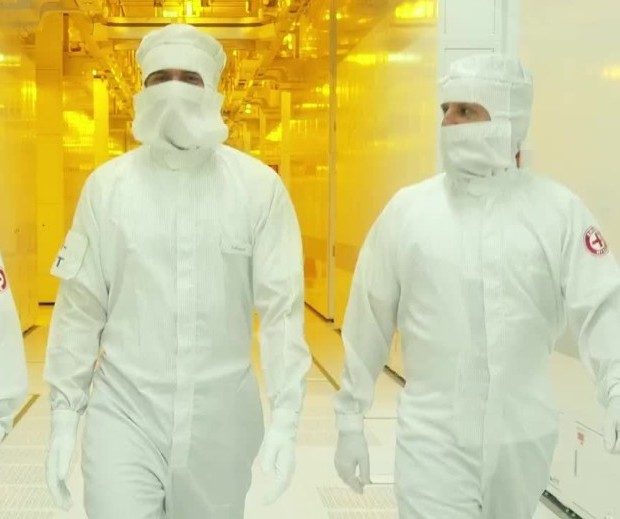In 1997 Intel introduced the world to the ‘Bunny People’ in a Super Bowl commercial. And the ‘bunny suit’ – nicknamed due to its resemblance to the easter bunny without ears or tail – became one of the most iconic symbols of the semiconductor industry.
So, what is a bunny suit? Simply put, it is an overall garment worn by workers inside of a semiconductor manufacturing fab to protect against the introduction of particles. Under a microscope a semiconductor looks like a city. However, this ‘city’ is built at dimensions so small that even a single speck of dust can cause complete destruction and may cost manufacturing fabs millions of dollars.

The average human sheds one billion skin cells per day or “up to 2 million particles in a single minute” as another reference stated. The bunny suit, albeit funny looking, is the first line defense to ensure nothing – not a skin cell, thread, hair, or speck of dust – gets on the valuable semiconductor. Another concern for semiconductor manufacturing is static electricity. Even at microscopic levels static can cause defects on the wafer. Once again like cleanroom armor, the bunny suit (made with anti-static materials) eliminates the potential for destruction by static.
Now to your question “will I have to wear a bunny suit if I work the in the semiconductor industry?” The quick answer is – maybe. If you are working inside of a fab you will ‘gown up’ as it is called. If you are not working inside of a fab you may have to wear some type of protective clothing such as shoe coverings, smock and/or hair covering in designated areas of a facility. Other than that, what you wear depends on your company policies.
In 1997 Intel introduced the world to the ‘Bunny People’ in a Super Bowl commercial. And the ‘bunny suit’ – nicknamed due to its resemblance to the easter bunny without ears or tail – became one of the most iconic symbols of the semiconductor industry.
So, what is a bunny suit? Simply put, it is an overall garment worn by workers inside of a semiconductor manufacturing fab to protect against the introduction of particles. Under a microscope a semiconductor looks like a city. However, this ‘city’ is built at dimensions so small that even a single speck of dust can cause complete destruction and may cost manufacturing fabs millions of dollars.
The average human sheds one billion skin cells per day or “up to 2 million particles in a single minute” as another reference stated. The bunny suit, albeit funny looking, is the first line defense to ensure nothing – not a skin cell, thread, hair, or speck of dust – gets on the valuable semiconductor. Another concern for semiconductor manufacturing is static electricity. Even at microscopic levels static can cause defects on the wafer. Once again like cleanroom armor, the bunny suit (made with anti-static materials) eliminates the potential for destruction by static.
Now to your question “will I have to wear a bunny suit if I work the in the semiconductor industry?” The quick answer is – maybe. If you are working inside of a fab you will ‘gown up’ as it is called. If you are not working inside of a fab you may have to wear some type of protective clothing such as shoe coverings, smock and/or hair covering in designated areas of a facility. Other than that, what you wear depends on your company policies.

